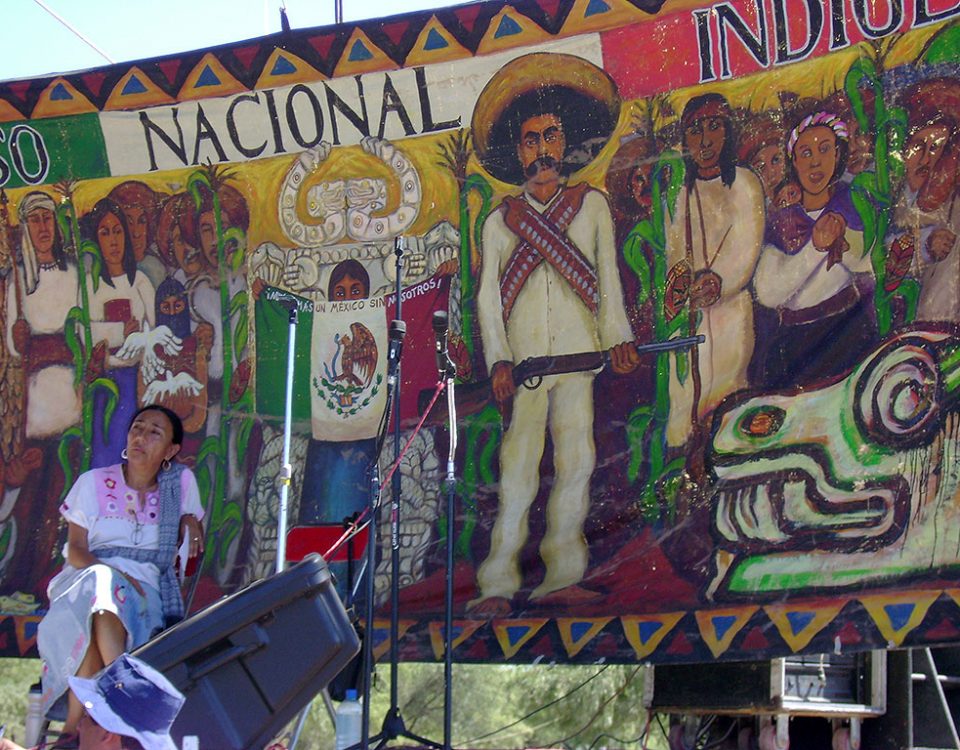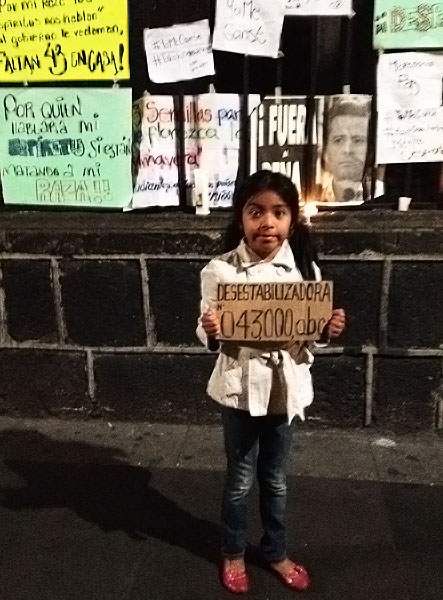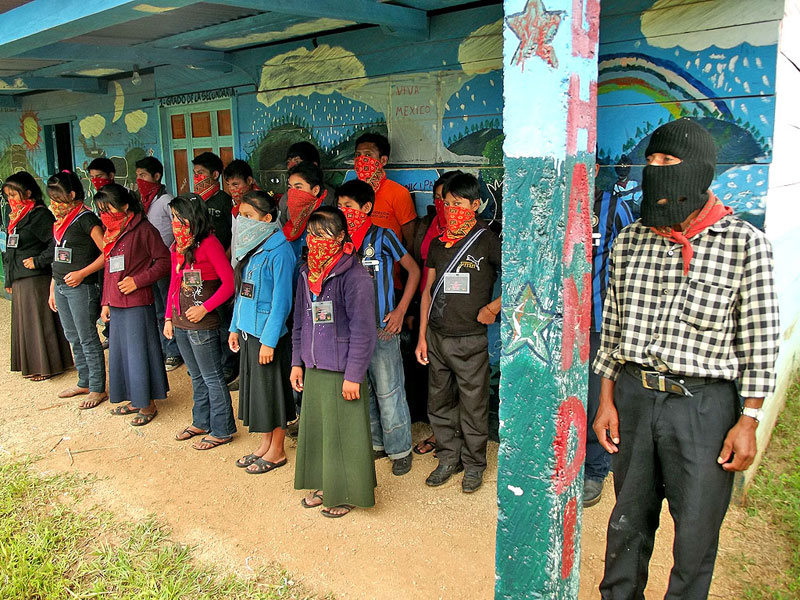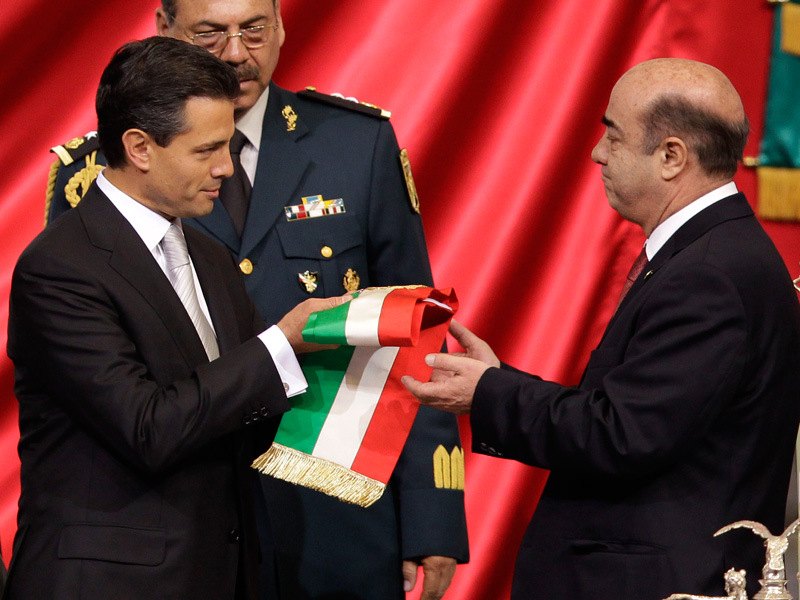2007
01/01/2008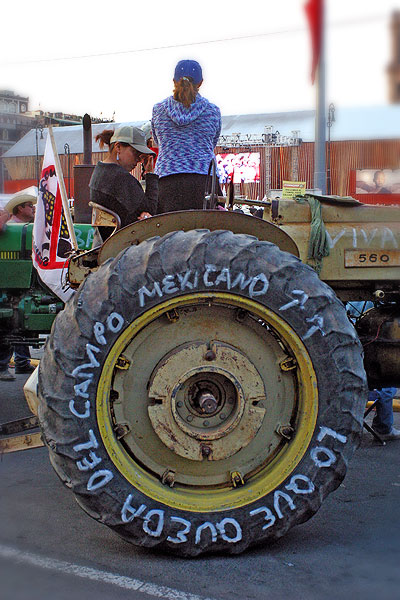
ANALYSIS: Mexico 2008, Turbulence on the horizon?
29/02/2008In December, subcomandante Marcos Publisher a communiqué titled “Feeling Red: The Calendar and Geography of War” (“Sentir el rojo; el calendario y la geografía de la guerra”), in which he denounces the wave of aggression which the zapatista territories had been subject to in the previous months. He underlined the fact that “this is the first time that these aggressions have, mockingly, come from supposed leftist governments or that have been perpetrated with aboveboard support from the institutional left and it is the first time since that early morning in January of 1994 that the social, national and international response has been insignificant or non-existent.” In addition he warned that “We will try to continue consolidating the civil and pacific path we have taken through the Other Campaign, and, at the same time, we will be prepared to resist, alone, the reactivation of aggression towards us, be it via the army, the police or paramilitary groups. Those of us who have made war know how to recognize the paths through which it is prepared and when it is near at hand. The signs of war on the horizon are clear.”
 Over the course of the year, the EZLN maintained various channels of communication with the national and international civil society. Three delegations of commanders along with subcomandante Marcos toured the north of Mexico from January to early June. In September, the EZLN announced the suspension of the of the Sixth Commission (Comisión Sexta) tour previously planned to take place between September and December in the central and southern regions of the country in order to concentrate on the defense of their own communities. While most political actors and the front pages of local newspapers were focused on the municipal elections of October, a growing number of events including harassment, violence and forced evictions occurred apparently isolated and with hardly any public mention.
Over the course of the year, the EZLN maintained various channels of communication with the national and international civil society. Three delegations of commanders along with subcomandante Marcos toured the north of Mexico from January to early June. In September, the EZLN announced the suspension of the of the Sixth Commission (Comisión Sexta) tour previously planned to take place between September and December in the central and southern regions of the country in order to concentrate on the defense of their own communities. While most political actors and the front pages of local newspapers were focused on the municipal elections of October, a growing number of events including harassment, violence and forced evictions occurred apparently isolated and with hardly any public mention.
In addition to the Other Campaign, the EZLN carried out three Gatherings of the Zapatistas with the Peoples of the World: on New Year’s Day 2007 at the Caracol of Oventic; in July at three of the five Caracoles; and at the close of 2007 at the Caracol of La Garrucha (which also saw the First Gathering of Zapatista Women with the Women of the World). Another noteworthy event held by the EZLN was the Gathering of the Indigenous Peoples of the Americas which took place in October at the Yaqui community of Vicam, Sonora. Five hundred seventy indigenous delegates representing sixty-six indigenous groups from 12 countries were in attendance. A week before the Gathering, the Zapatista delegation was detained at a revision post maintained by the military and judicial officials in Mazatlán, Sinaloa. After the incident, the zapatista commanders returned to Chiapas, leaving subcomandante Marcos to attend the Gathering as the sole representative of the EZLN.
Outside of the alternative media, there was a vacuum of information in terms of actions carried out by the zapatistas as well as the repression they were subject to. The Calderón administration appeared to continue in the same line as its predecessor in which it attempted to minimize or completely avoid acknowledging the existence of the conflict in Chiapas. A telling example of this posture occurred in April when Luís H. Álvarez, head of the National Commission for the Development of Indigenous Peoples (Comisión Nacional para el Desarrollo de los Pueblos Indígenas) and ex Governmental Commissioner for Peace in Chiapas pointed out that the “EZLN is not a negotiator with Felipe Calderón’s government,” now that it neither represents nor is integrated into indigenous communities.
Though the fundamental causes of the social dissatisfaction expressed in 2006 (particularly within the post-electoral context) had not been solved, the new government of Felipe Calderón has been able to present itself as if in there has been a return to “democratic normality.” The administration maintained an “iron fist” strategy, using the armed forces in its implementation. Not withstanding, the massive operations against organized crime and drug trafficking did not appear to achieve their goals: not one day passed without an execution, ambush or shooting being reported.
The tendency towards militarization was intensified through various international agreements made in 2007: Mexico, the United States and Canada continued to advance talks on the Security and Prosperity Partnership of North America (SPP, also known as NAFTA plus as it includes proposals for the harmonization of economic and security strategies between the three nations). Corollary to the SPP the Mexican and US governments began negotiating the implementation of another agreement created in response to the “war on drugs” and organized crime in Mexico. The idea was solidified in March of 2007 during a visit by US President George W. Bush to the Mexican city of Mérida. As a result of the meeting held there between Bush and Calderón, the name “Mérida Initiative” was applied to the agreement.
2007 saw the reappearance of various other armed groups to the public arena. In early July, the Popular Revolutionary Army (EPR, Ejército Popular Revolucionario), with a recognized presence in Guerrero, Oaxaca and Chiapas, publicly claimed responsibility for eight explosive devices detonated in Pemex (Petróleos Mexicanos, the Mexican national petroleum company) pipelines located in the states of Guanajuato and Querétaro. They made clear that the explosions were part of a larger campaign to pressure the Calderón administration to provide proof of life in the cases of two of their members who were disappeared in the state of Oaxaca in May.
Likewise, in July, the Lucio Cabañas Barrientos Revolutionary Movement (MRLCB, Movimiento Revolucionario Lucio Cabañas Barrientos, an armed group that claimed responsibility for the bombings at the Electoral Tribunal and the Institutional Revolutionary Party’s [PRI] headquarters in Mexico City in November of 2006) made a call to their militant members in which they stated that they should be ready “to act militarily.” Another armed group, the Revolutionary Armed Forces of the People (FARP, Fuerzas Armadas Revolucionarias del Pueblo) also warned that they were “in talks to decide that which no one wants to discuss, but which the vortex is drawing us towards.” Analysts reiterated the point that the closing of channels for dialogue and negotiation could make social movements feel cornered resulting in a radicalization of their methods of struggle.

